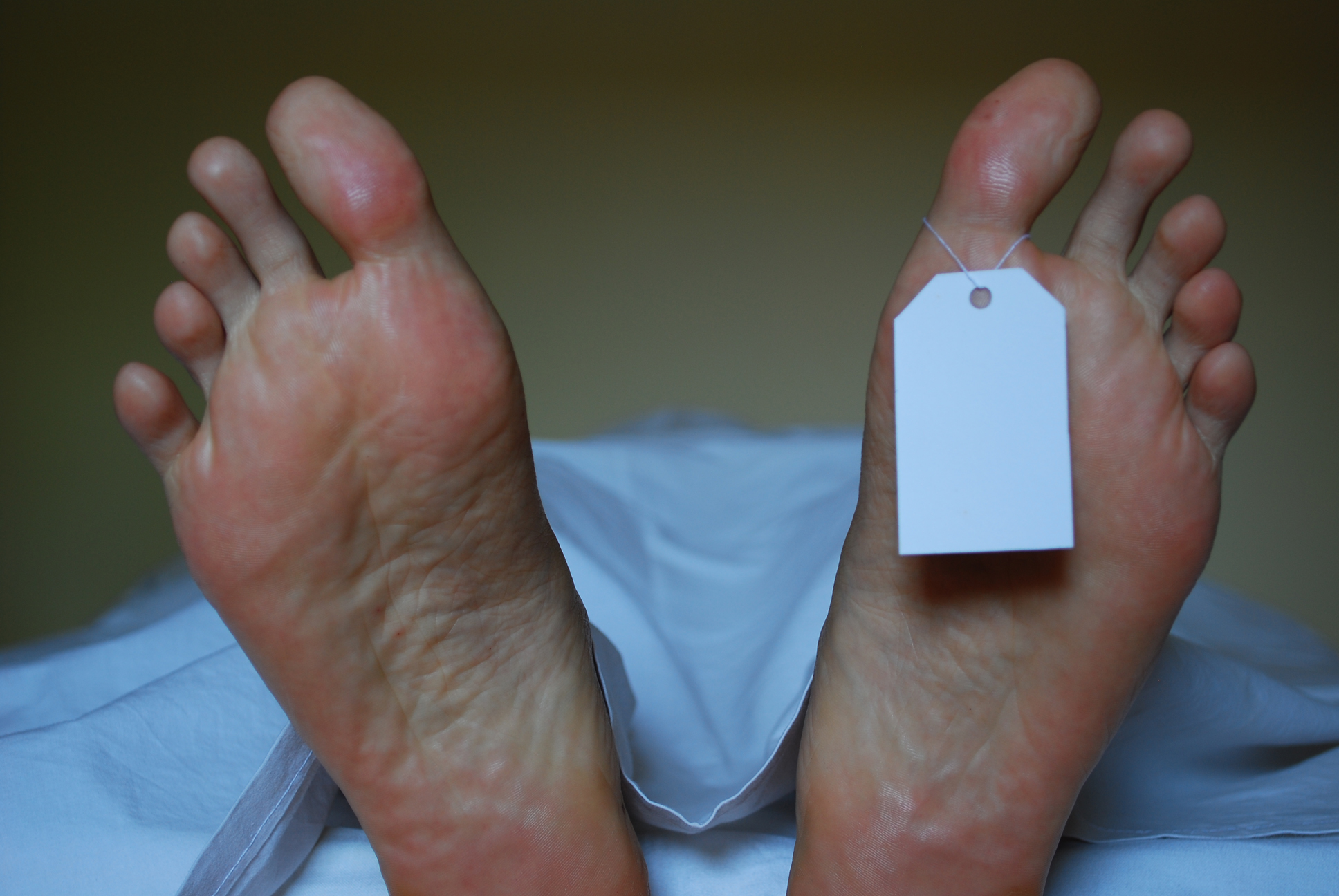

One morning, in a hospital in the Czech Republic, a 69-year-old man died of heart disease. An hour later, as nurses were preparing to move his body down to the lab for autopsy, they noticed his skin was unusually warm. After calling the doctor back to make sure the man was really dead (he was), they took his temperature. At 1.5 hours after death, the body was 104 degrees Fahrenheit—about five degrees hotter than it was before he died, even though the hospital room was kept at about 68 degrees.
Fearing the body might spontaneously combust, the doctor and nurses took pains to cool it with ice packs, and eventually it got as chilly as one would expect of a corpse. This interesting case-study is published in the American Journal of Forensic Medicine and Pathology, and in fact has nothing to do with spontaneous combustion.
“Post-mortem hyperthermia is a well-documented phenomenon, but it’s not well understood,” says Victor Weedn, a forensic pathologist at George Washington University. Although it’s mentioned in forensic science textbooks, “It’s not necessarily known by a lot of people.”
In a living body, cells generate heat as they break down food, usually keeping the body temperature around a comfortable 98.6 degrees Fahrenheit. After death, with no food and no oxygen to digest it with, cells generally stop producing heat, and the body cools down at a fairly predictable rate over several hours. Investigators commonly use body temperature to estimate how long it’s been since a person died—which can be essential in solving a murder, for example.
Unfortunately, the relationship between body temperature and time may not always be so straightforward.
Catching Heat
In 1839, physician John Davey documented some unusually high temperatures in the bodies of British soldiers who died in Malta. Some corpses got as hot as 113 degrees Fahrenheit, although Davey speculated the warm climate might have played a role. Nevertheless, post-mortem heating has been documented by numerous other physicians and forensic scientists.
However, Peter Noble, a microbiologist from Alabama State University who studies how microbiomes and gene expression change after death, thinks the studies on post-mortem heating haven’t been rigorous enough. He noted that many fail to mention the accuracy of their thermometers, where the temperatures were taken (the rectal temperature is the gold standard, because it gives the core body temp), the ambient temperature in the room, and whether or not the corpses were clothed. And many of the studies have not been peer-reviewed.
In fact, Noble is not convinced that post-mortem heating is a real phenomenon. In the Czech case, he notes that the body’s temperature was taken in the armpit, which is not ideal, and if the thermometer wasn’t reasonably accurate, the highest and lowest temperatures may have actually been significantly different.
Hot Mess
If post-mortem heating does exist, there’s a chance it could mess up forensic investigations, according to the authors on the case study.
That risk is greatest in some parts of Europe; American investigators are less likely to rely on body temperature to estimate the time since death, says Weedn. “To the extent that we use it, it’s just as a general thing. If it’s warm, you know the death was fairly recent.”
That’s because a lot of factors can influence the temperature of a body, including the how much fat or clothing is on the corpse, ambient temperature, and moisture. “There’s so much variation that it’s not very valuable,” says Weedn.
So investigators in the U.S. tend to rely on multiple indicators to provide a range of time wherein a death is most likely to have occurred. The stiffness of the muscles (rigor mortis), color changes as the blood settles due to gravity, putrefaction, and insect colonization all provide clues that help to solve a mysterious death.
Unsolved mysteries
But post-mortem heating itself remains mysterious. Its causes, frequency, and even its very existence remain blurry. The phenomenon has been difficult to study, because the cases are fairly rare and unpredictable, and not everyone dies in hospital beds with their temperature carefully monitored.
Factors that may make a body more susceptible to post-mortem heating are as wide-ranging as intoxication, brain trauma, asphyxiation, cancer, drug use, infection, heart attack, and excited delirium.
As for what’s causing the heating, most papers just hand-wave and say “metabolic processes.” The latest paper suggests “continuing tissue and bacterial metabolism and insufficient thermal loss.”
It’s possible that if a person is running and dies suddenly—blood circulation stops—the heat in their muscles would have nowhere to go and the body would heat up temporarily, says Noble. Or perhaps drugs that manipulate blood flow could play a role. But decompositional bacteria probably couldn’t cause post-mortem heating, he says, because “the immune system is still functional at 24 hours postmortem and bacterial growth is generally suppressed.”
The bacteria in our guts may continue to break down food after we die, which could generate some heat. And the cells in your body don’t all stop metabolizing at once. They’ll continue to use oxygen and break down food for as long as they can—which is maybe a few minutes after breathing and circulation stops. As the carbon dioxide they produce builds up with nowhere to go, the resulting acid starts to break down the cells in a process called autolysis, or self-digestion. That process could also theoretically generate heat. But then, why doesn’t post-mortem heating occur more often?
According to Weedn, the U.S. doesn’t have much support for researchers who try to answer these types of questions, or for forensic science research in general.
With more questions than answers, and the lack of an active investigation, you could call this … a cold case.